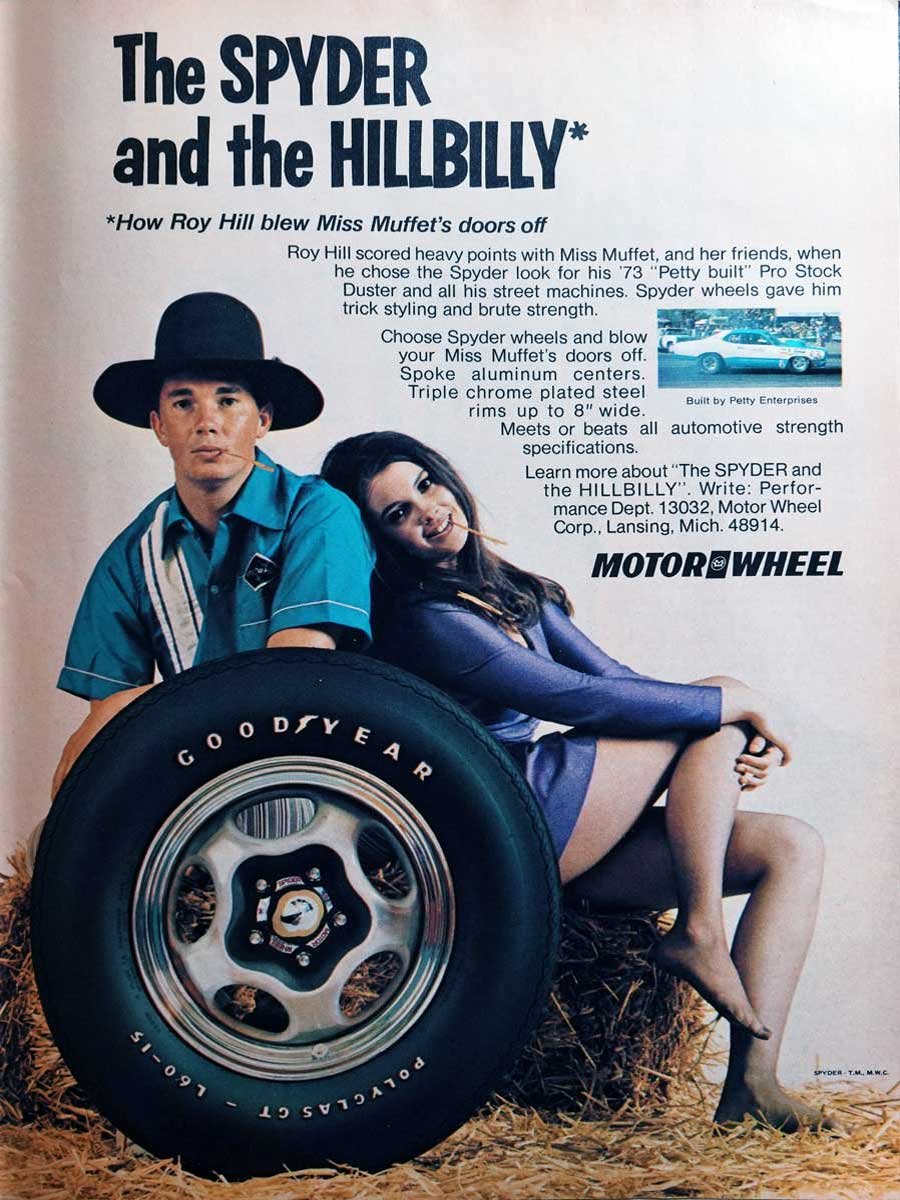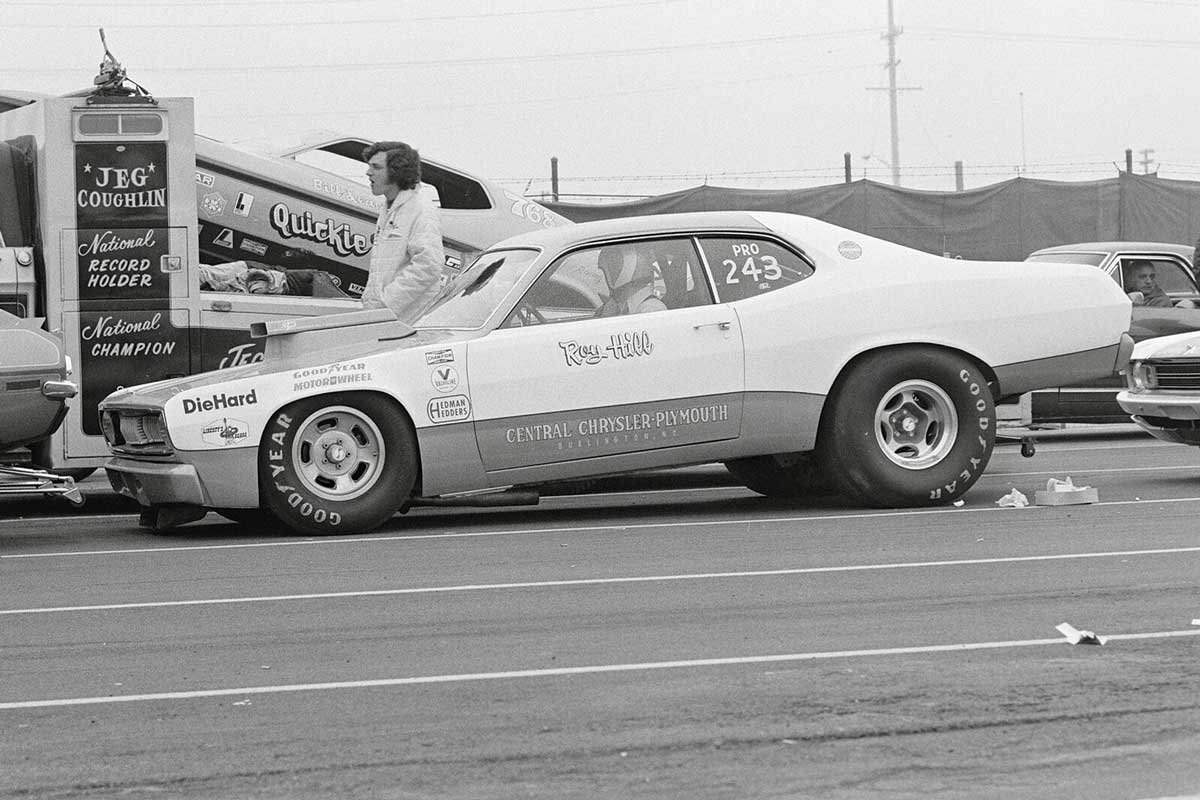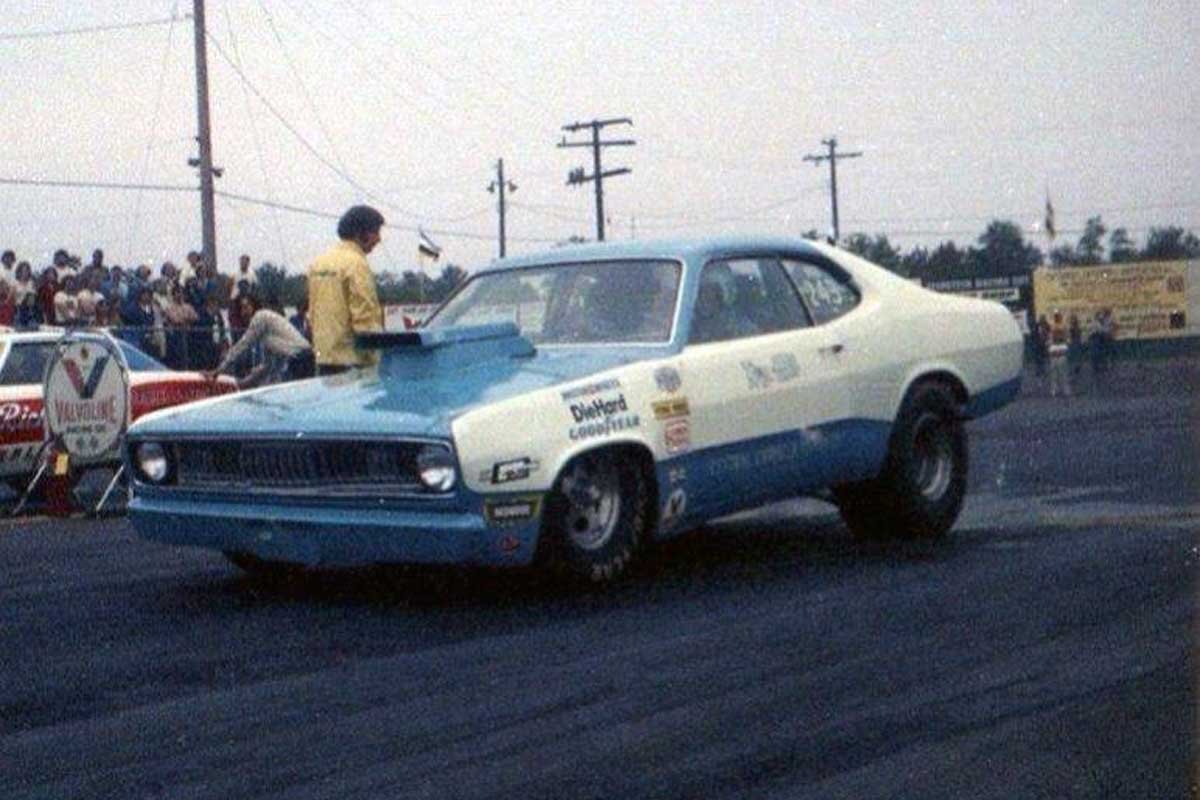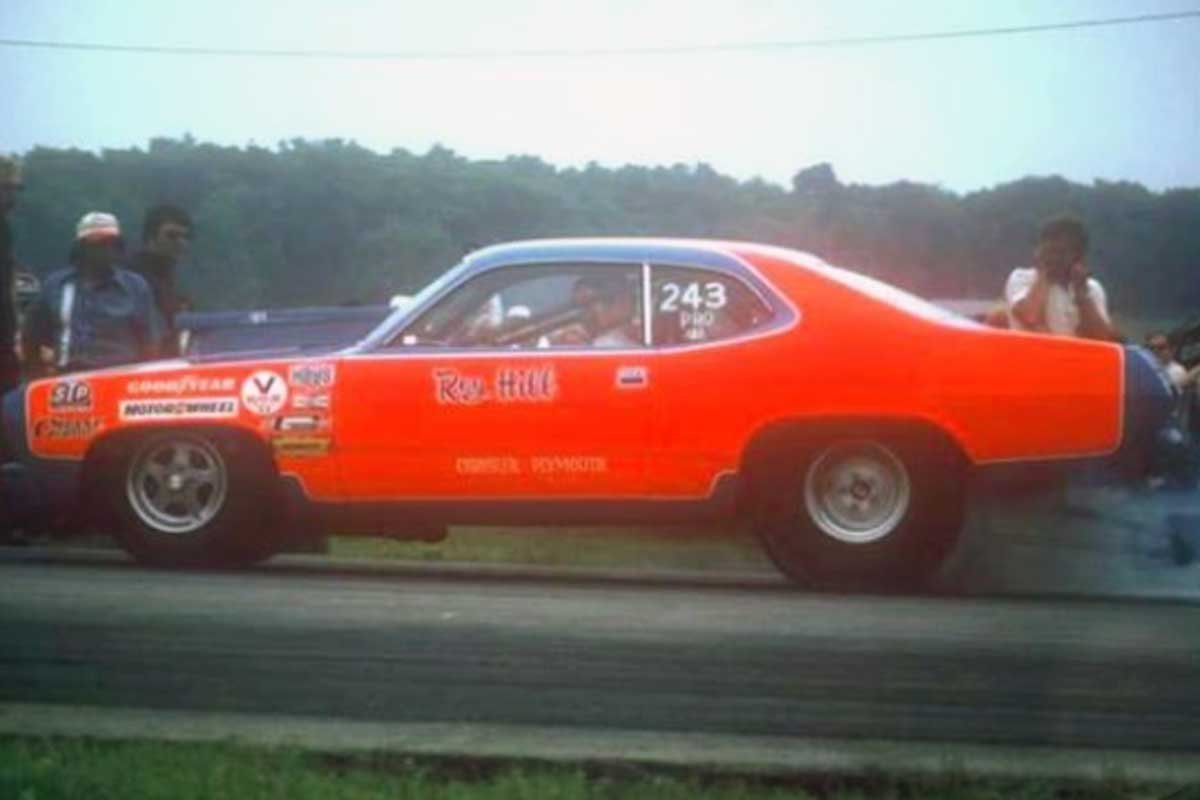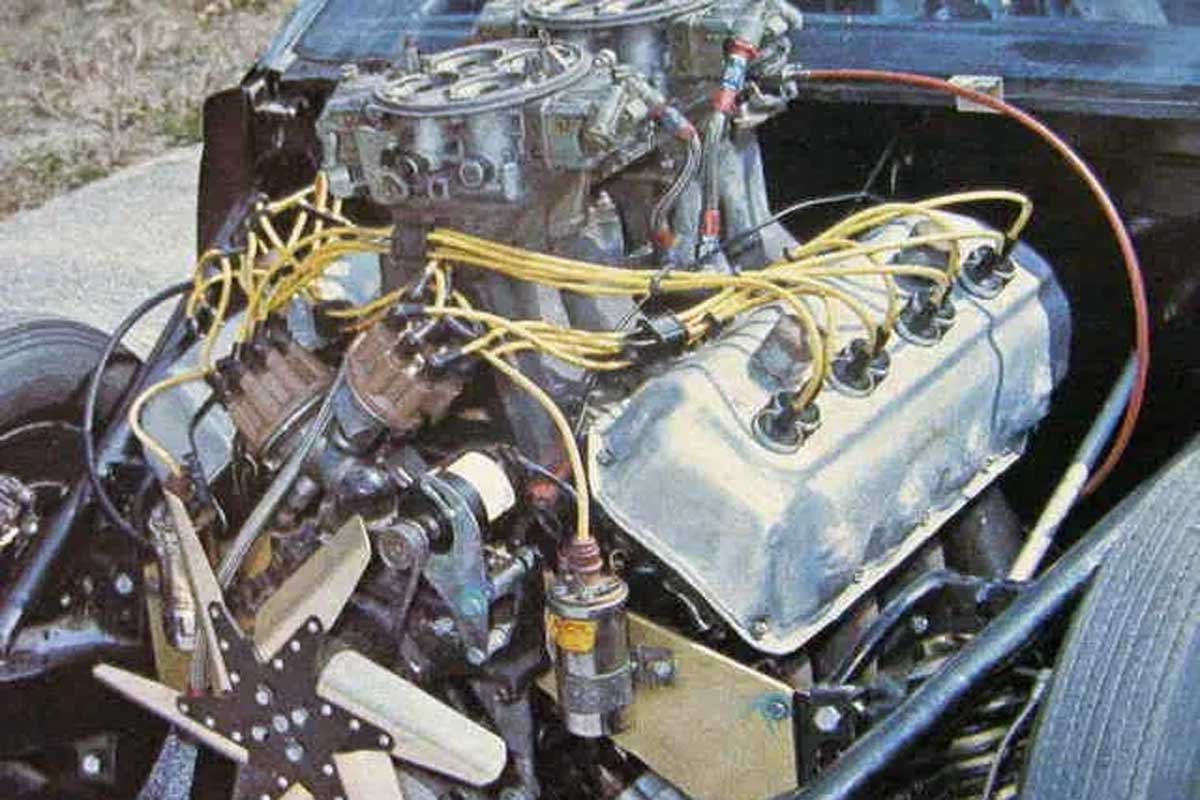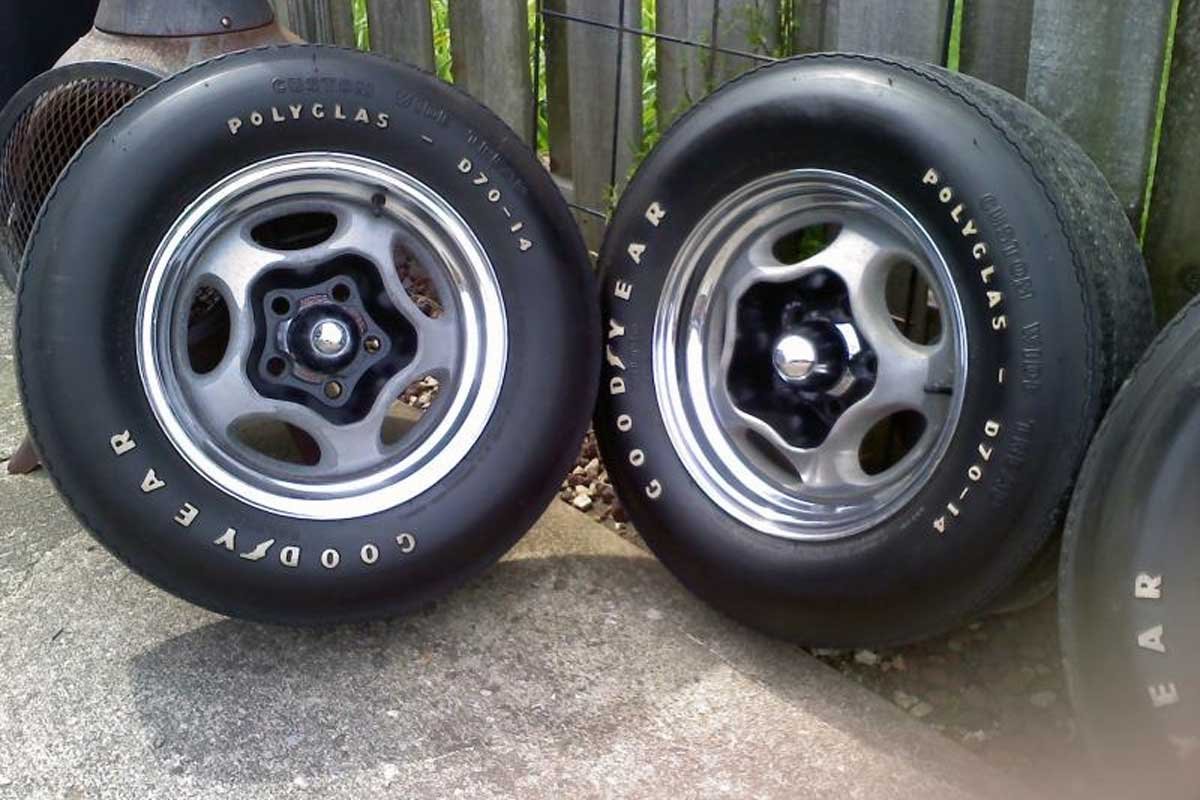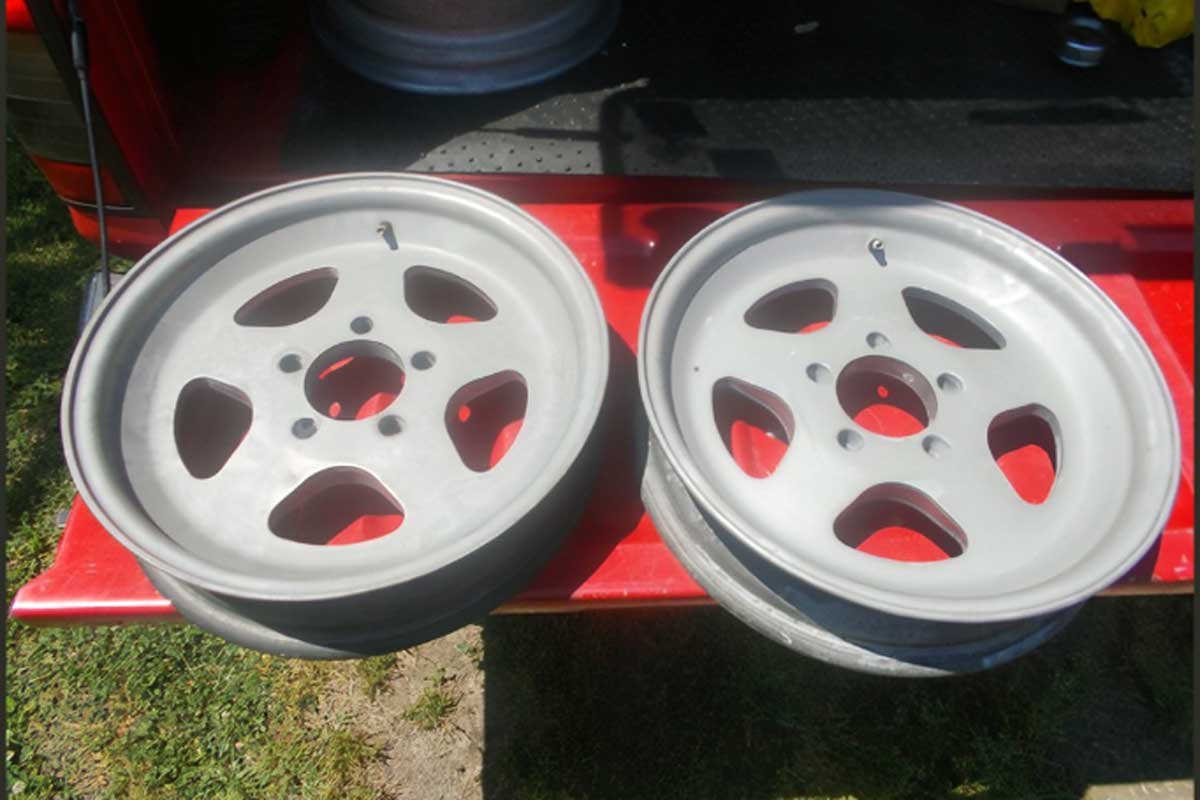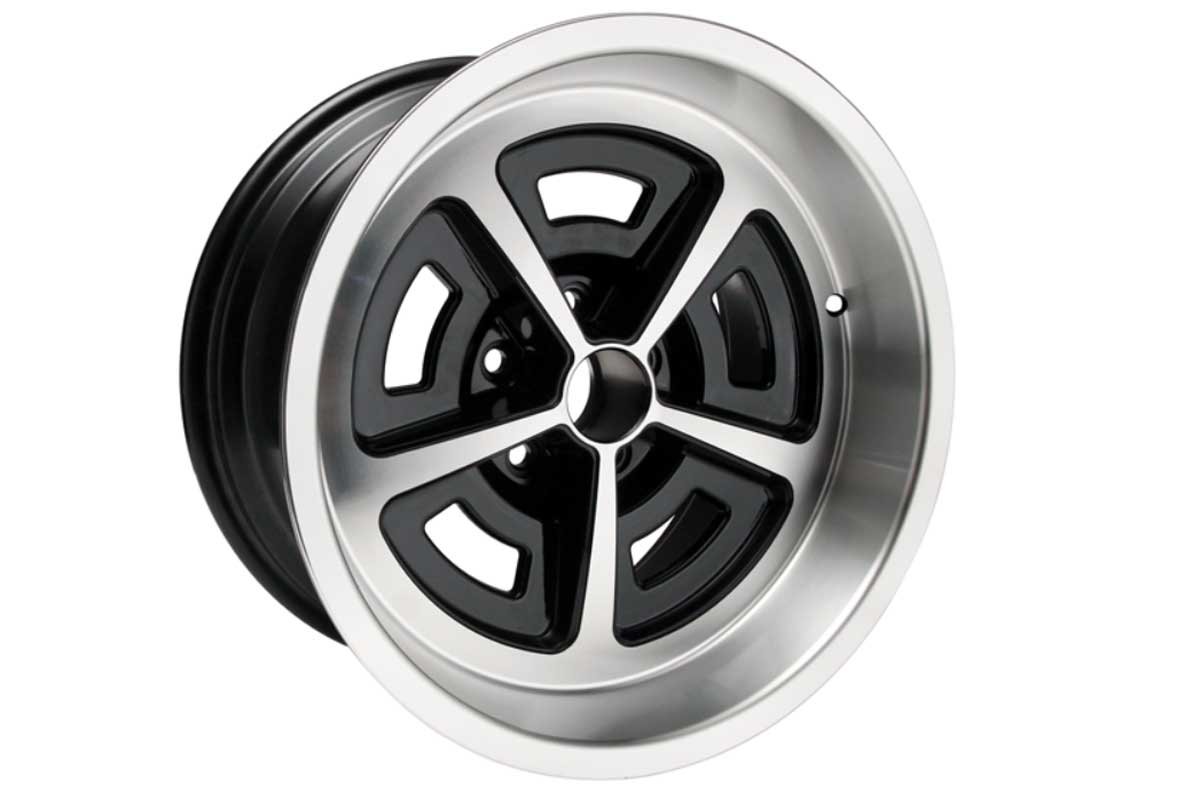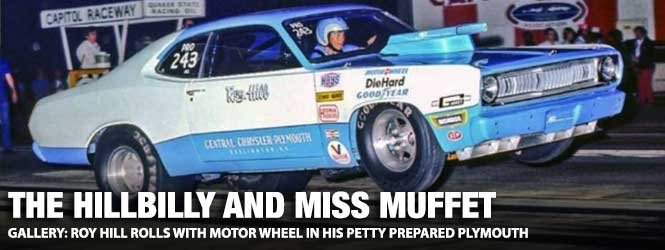
Many drag racing fans have heard of Roy Hill because of his Roy Hill Drag Racing School, where he educates and coaches aspiring drag racers, but few will likely remember he ran several Plymouths at the start of his career. Hill joined forces with Petty Enterprises to race Dusters and Arrows during the 1970s.
Above: The Motor Wheel Corporation, a Goodyear Tire and Rubber Company subsidiary, had magazine advertisements for the Spyder wheel from late 1972 through 1973. The advertisements played on the Little Miss Muffet and the Spider nursery rhyme but with a more adult twist. “Hillbilly” Roy Hill was one of several Pro Stock entries that used the Spyder wheel and later the Fly wheel.
In his earliest racing years, Hill relied on the Motor Wheel Corporation for wheels as depicted in the September 1973 Car Craft magazine advertisement. Motor Wheel may not be a household name due to its limited success in the aftermarket wheel arena dominated by Cragar, Keystone, American Racing, Centerline, and Fenton.
Motor Wheel, which began constructing production wheels in 1934, created the iconic Magnum 500 while a subsidiary of the Goodyear Tire and Rubber Company in the mid-1960s. The big three (Chrysler, Ford, Chevrolet), among others, employed a version of the Magnum 500 wheel on specific production vehicles.
Above: Although the Pro Stock eliminator was still in its infancy, the cars had already started deviating from the factory stock appearance. The rear wheels are moved slightly forward, and the front wheels are shifted substantially forward. The wheel openings are significantly different between the two photos. The Spyder wheels are on the rear of the Duster in both images. Fly wheels are on the front of the color photo. (Photographers unknown)
Enthusiasts uninterested in the Magnum 500 wheels would purchase a muscle car with stamped-steel wheels and hub caps with a plan to swap them for aftermarket wheels. From 1968 to 1973, Motor Wheel built the beautiful Spyder wheel, the choice of a select few, comprised of an aluminum center section and a steel rim.
For racing, Hill ran all-aluminum Spyders on the rear of his Dusters but ran the Motor Wheel Fly front wheels in the mid-1970s. The 15×3.5-inch Fly wheels were magnesium, a significant weight savings. Eventually, aluminum (and some constructed of magnesium) Fly wheels were mounted on the rear of his Dusters.
Above: Although the blue and white Dusters were Petty Prepared Plymouths, the famous colors of Petty blue and STP orange made it undeniable that the Hill Dusters were part of the Petty clan. The Motor Wheel sponsor sticker is proudly affixed to the Duster’s front fender. Hill used a different combination of Motor Wheel rear wheels in the two photos: aluminum (left image) or magnesium (right picture). The front wheels appear to be magnesium Fly wheels. (Photographers unknown)
The Fly wheels were Motor Wheel’s venture into drag racing wheel production and were seen on some prominent Pro Stock cars of the time, including Mike Fons, Gapp & Roush (Wayne Gapp and Jack Roush), Bob Glidden, and Hill.
There is a rumor that Greg Weld of Weld Wheels tried to acquire the patent for the Fly wheel from Motor Wheel, but a deal could not be struck. Instead, Weld had his engineers improve upon the Fly wheel design. The wheel became known as the Weld Dragstar. Additionally, Monoque Wheels developed a version, as did Bogart Wheels, each based upon the original Motor Wheel Fly design.

Above: During the 1970s and early 1980s, the National Hot Rod Association (NHRA) mandated weight breaks based on engine cubic inch displacements. Unfortunately, the Mopar Hemi cars had to carry a tremendous amount of additional weight to slow them down. In 1977, the International Hot Rod Association (IHRA) introduced the mountain motor format, which allowed Hill to remove the excessive weight from the Duster. Hill earned many of his wins with his mountain motor Hemis. (Photographer unknown)
During all his years of racing, Hill scored several top-10 International Hot Rod Association (IHRA) Pro Stock finishes. Hill raced at the first IHRA race in 1971 and reached a career total of thirty-three final rounds. Of those finals, Hill achieved twenty-six of them after IHRA converted to the mountain motor format in 1977.
Above Left: The iconic 426 Hemi with dual plug heads, a tunnel ram, and a pair of Holley Dominator carburetors – the best-looking engine ever. Above Right: A young Roy Hill checks out the “office” in one of his Dusters. The Lenco shifters date the photo to around 1973 or 1974. (Photographers unknown)
The switch to the big engines came with a fixed vehicle weight of 2350 pounds, allowing Hill to shed plenty of weight he had been required to carry under the previous rules. Hill’s big Hemi was able to dominate, propelling him to several wins.
Above Left: Perusing the internet, a pair of Spyder wheels and Goodyear tires looking like they were from a 1973 magazine advertisement popped up. The cost would set back a bank account substantially. Above Right: A pair of magnesium Fly wheels were also located. Cool but costly. Cash in the 401K for these wheels. (Photographers unknown)
While still in business, Motor Wheel no longer constructs wheels for the original equipment manufacturer (OEM) or aftermarket. Yet, its legacy continues. Finding used Spyder or Fly wheels may be more difficult than finding the proverbial needle in a haystack.
Above: YearOne offers the Magnum 500 in 14- and 15-inch sizes for the classic muscle car era Mopars. If an updated appearance and larger wheel are needed, YearOne also has cast aluminum 17-inch wheels based upon the Magnum 500 design.
Conversely, Magnum 500 wheels (derivatives of Motor Wheel’s design) are still reproduced nearly sixty years after their introduction. YearOne offers plenty of factory sizes to meet the needs of Mopar enthusiasts, and if 21st-century versions are desired, 17-inch cast aluminum versions are available.



